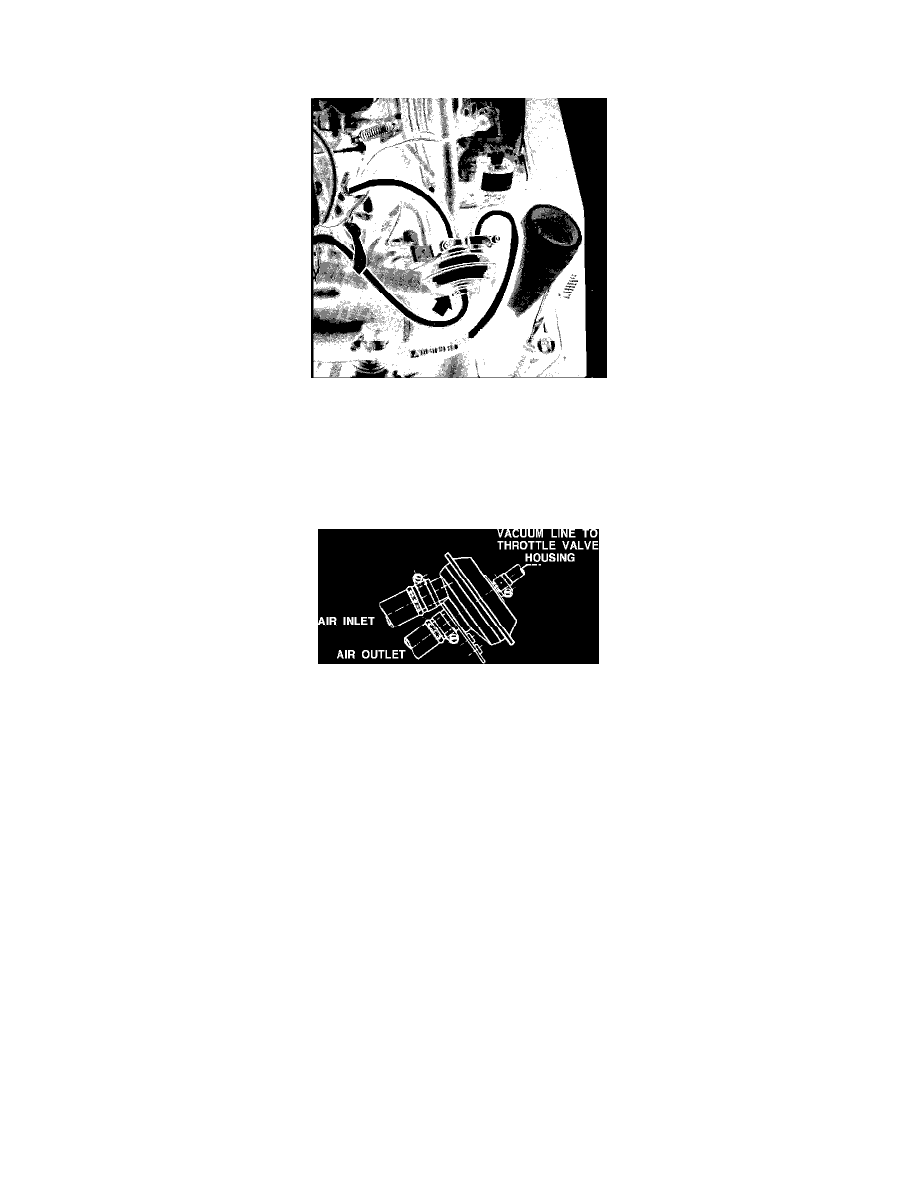911 Turbo F6-3299cc 3.3L SOHC Turbo (1992)

Deceleration Valve: Description and Operation
Deceleration Valve (DCV)
Fig. 31 Deceleration Valve
PURPOSE
During deceleration, the engine must be kept from running on an excessively rich air/fuel mixture. The deceleration valve is used to maintain the
correct air/fuel ratio during deceleration or abrupt closing of the throttle valve.
This is done by adding fresh air to the intake manifold. Adding the air leans out the rich air/fuel mixture existing during deceleration.
Fig. 32 Deceleration Valve
CONSTRUCTION
The deceleration valve consists of an air inlet, air outlet and a vacuum connection. Inside it houses a spring loaded diaphragm.
OPERATION
A hose routed from the intercooler to the deceleration valve and from there to the intake manifold lets the fresh air bypass the closed throttle valve. The
deceleration valve (controlled by vacuum from the throttle housing) regulates the amount of fresh air that bypasses the throttle valve.
In resting position (engine off or at idle), the diaphragm (under spring tension) blocks off the air inlet and outlet ports. During normal or high engine
loads, the diaphragm retracts from the air in/outlet ports by the vacuum (taken from the throttle body) applied on the other side of the diaphragm. This
opens the inlet and outlet ports and fresh air can now pass through the valve into the intake manifold. As soon as the throttle valve closes, the vacuum
acting on the diaphragm gradually collapses and closes the air inlet and outlet ports. This action causes the high engine RPM to return slowly to idle
speed.
